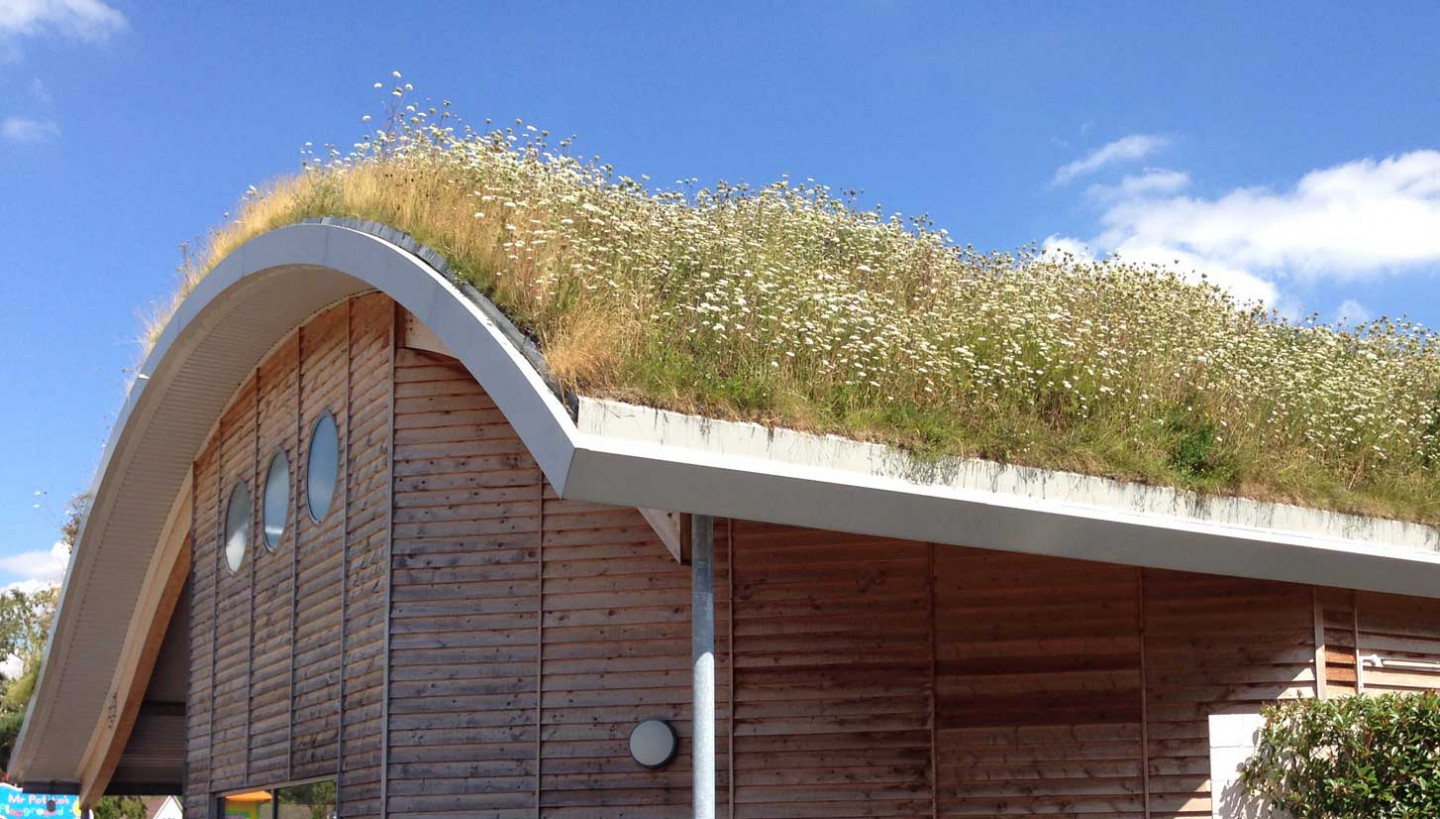The vegetating of a roof surface is described under a number of generic terms: ‘brown roof’, ‘biodiverse roof’, ‘living roof’ and so on. Each has evolved from the original terminology ‘green roof’ for marketing reasons or to differentiate specific methods of achieving habitat creation for flora or fauna.
To further complicate matters there are generic technical descriptions, used globally in standards and code of practice, to describe the construction of green roof systems. These are Extensive, Intensive and Biodiverse.
Download a Guide to Green Roof Systems
We have produced a guide to some of the more common options available for green roof systems, together with a brief overview of what they are and what they provide.
Each of the options are explored in detail on the overview document which you can download here
In addition we outline the key differences in this post, and provide links to additional information below.
Extensive Roofs
Extensive roofs are very popular and the lightest option, with a low build-up height and little or no irrigation required. They are suitable for all roof shapes including pitches up to 60 degrees. A number of planting options are possible:
Extensive Sedum Roof
Sedums are hardy succulents and very popular and convenient for green roofing. They are available in a mat form (Verdiroof Sedum Blanket), Plug Planted, or as Hydroplant and seed where both sedum cuttings and seed are sprayed in a mulch solution. The blanket is the highest cost but enables 90-95% plant cover on installation. Note that sedums do change colour with the seasons.
Extensive Wildflower Roof
Extensive green roof systems are now available with wildflowers, grasses, bulbs and hardy succulents as opposed to just succulents. Wildflower roofs can be a beautiful solution and give a building a distinctive character. As with the sedum option, planting options include a mat (Verdiroof wildflower blanket), plug planting and Hydroplant/seed.
If the project is to be assessed BREEAM (under LE 03 or LE04) or the Code for Sustainable Homes, points can be obtained for enhancing site ecology by comparing the number of locally significant species before and after construction. With all these wildflower roof options, the number of required species can be specified to secure these points in your assessment.
Biodiverse Roofs
Green Roof Verdico Biodiverse RenderWhere the project has specific biodiverse objectives, a biodiverse roof can be used to replicate or enhance the buildings pre-development habitat or even to attract specific wildlife species.
Biodiverse Brown Roof
The simplest of biodiverse roofs is a brown roof. This is left for nature to self-colonise without human intervention. In order to create a habitat for a variety of flora and fauna, an exposed, uneven substrate can be specified, and ‘habitat incidentals’ (rocks, tree branches and other hiding places) can be introduced to attract beetles, birds and other insects.
Biodiverse Green Roof or Living Roof
A ‘Living Roof’ or green biodiverse green roof system is the Rolls Royce of green roofs, in that it can be entirely bespoke in its specification. Plug planting can replicate the existing habitat or enhance it, and habitat ‘incidentals’ can again be used to create the ideal environment for fauna including bees, butterflies, invertebrates, bats, birds and so on as required. Living Roofs can be used to enhance the ecology of a site for rare species and can be used to support a Biodiversity Action Plan (BAP).
Intensive Roofs including Roof Garden, Roof Terrace
Intensive Green Roof Systems are green roofs that offer amenity benefits. This can include everything from a balcony, domestic garden or a full-scale small urban park. Build up heights are the most, beginning at 250mm, irrigation is required where there is planting, and regular maintenance as with any garden is a requirement.
Whilst intensive roofs are only suitable for low pitched roofs and will produce the greatest roof load, they offer a large number of benefits including the opportunity to enhance a working environment, enabling sport or social activity, or even for growing food.
SIG Design & Technology takes the risk out of roof design, offering a genuinely independent choice of waterproofing for flat, green, zinc and copper roofs. Designs are covered by our PI insurance and we’re part of SIG plc, a FTSE250 company. Our blog at www.singleply.co.uk/blog explores some of your common problems in roof design and system choice, or book our new RIBA CPDs, ‘A Structured Approach to Roof Specification & Design’ and ‘Specifying Hard Metals: Choosing the Right Product for the Project’.

